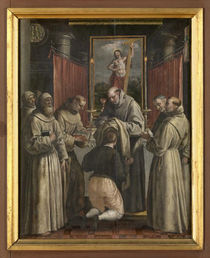The Catholic Defender: Saint Hilary of Arles
- Donald Hartley

- May 1
- 3 min read

On May 5, Catholics celebrate Saint Hilary of Arles, a fifth-century bishop who gave up wealth and privilege in favor of austerity and sacrifice for the sake of the Church.
St. Hilary of Arles (born 401, probably northern Gaul—died May 5, 449, Arles; feast day May 5) was a Gallo-Roman bishop of Arles who is often regarded as providing the occasion for extending papal authority in Gaul.
While young, Hilary entered the Abbey of Lérins that was presided over by his kinsman Honoratus, who later became bishop of Arles.
“On one side,” Hilary later recalled, “I saw the Lord calling me; on the other the world offering me its seducing charms and pleasures. How often did I embrace and reject, will and not will the same thing!”
“But in the end Jesus Christ triumphed in me. And three days after Honoratus had left me, the mercy of God, solicited by his prayers, subdued my rebellious soul.”
In 429 Hilary succeeded Honoratus as bishop and vigorously promoted reforms through several councils, including that of Orange (441).
Known for his kindness and charity, the archbishop was also remembered for publicly rebuking a government official who brought shame on the Church. He also warned lukewarm believers that they would “not so easily get out of hell, if you are once unhappily fallen into its dungeons.”
His enthusiasm led him to interfere with provinces outside his metropolitan jurisdiction: in 443–444 he deposed Bishop Chelidonius of Besançon, irregularly replacing him with another bishop, Projectus.
This act was quashed by Pope St. Leo I, who deprived Hilary of all metropolitan rights but did not remove him from his see. These measures, to which Hilary submitted, were endorsed by a decree of the Western Roman emperor Valentinian III.
It’s been said that youth is wasted on the young. In some ways, that was true for today’s saint.
Born in France in the early fifth century, Hilary came from an aristocratic family. In the course of his education he encountered his relative, Honoratus, who encouraged the young man to join him in the monastic life. Hilary did so. He continued to follow in the footsteps of Honoratus as bishop. Hilary was only 29 when he was chosen bishop of Arles.
The new, youthful bishop undertook the role with confidence. He did manual labor to earn money for the poor. He sold sacred vessels to ransom captives. He became a magnificent orator. He traveled everywhere on foot, always wearing simple clothing.
Hilary helped to establish monasteries in his diocese, and strengthened the discipline and orthodoxy of the local Church through a series of councils. He sold Church property in order to pay the ransoms of those who had been kidnapped, and is said to have worked miracles during his lifetime.
That was the bright side. Hilary encountered difficulty in his relationships with other bishops over whom he had some jurisdiction. He unilaterally deposed one bishop. He selected another bishop to replace one who was very ill–but, to complicate matters, did not die! Pope Saint Leo the Great kept Hilary a bishop but stripped him of some of his powers.
Hilary died at 49. He was a man of talent and piety who in due time, had learned how to be a bishop.
St. Hilary of Arles died on May 5, 449. Although his life was marked by some canonical disputes with Pope St. Leo I, the Pope himself praised the late Archbishop of Arles in a letter to his successor, honoring him as “Hilary of holy memory.”
Saint Hilary teaches us to respect authority even if found in a young person. Age is not the issue: prudence and wisdom are.





















Comments